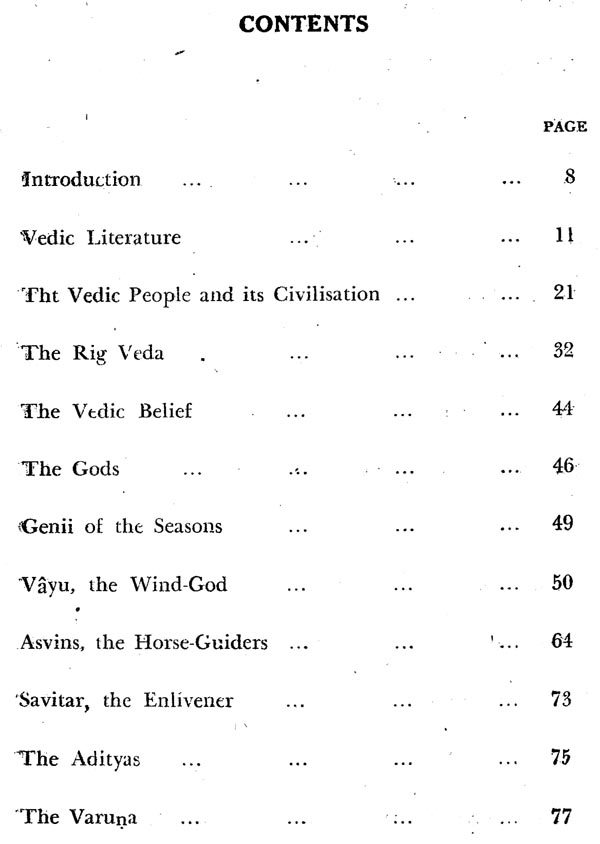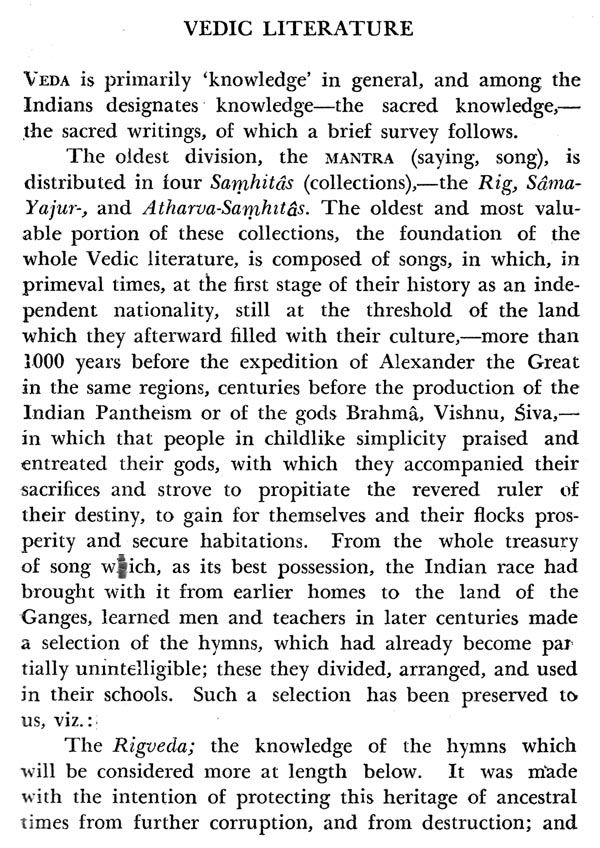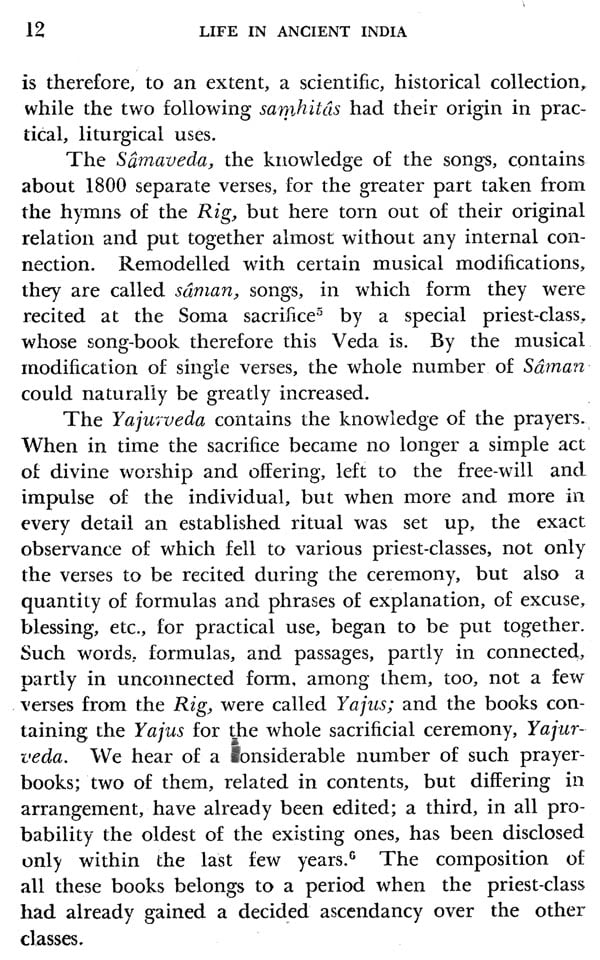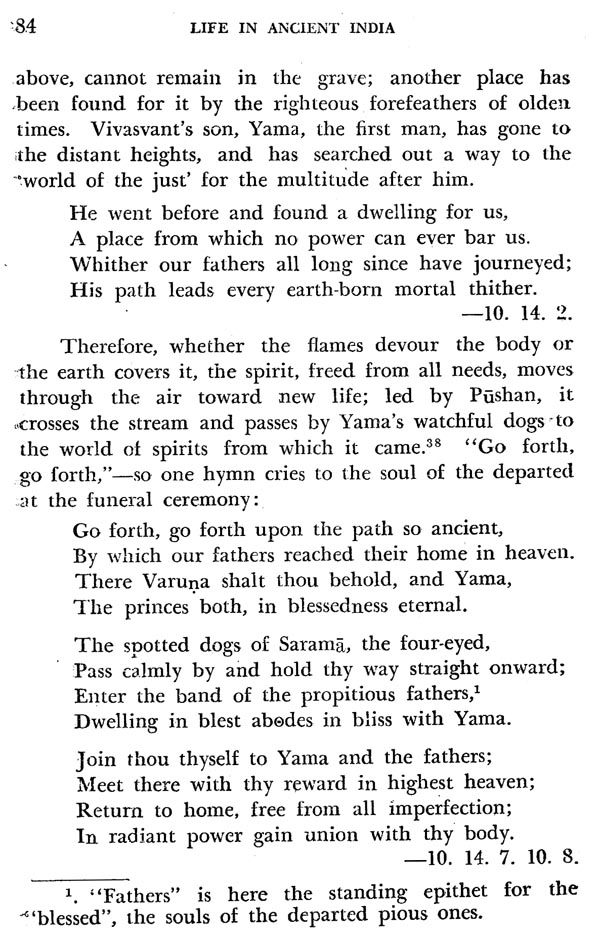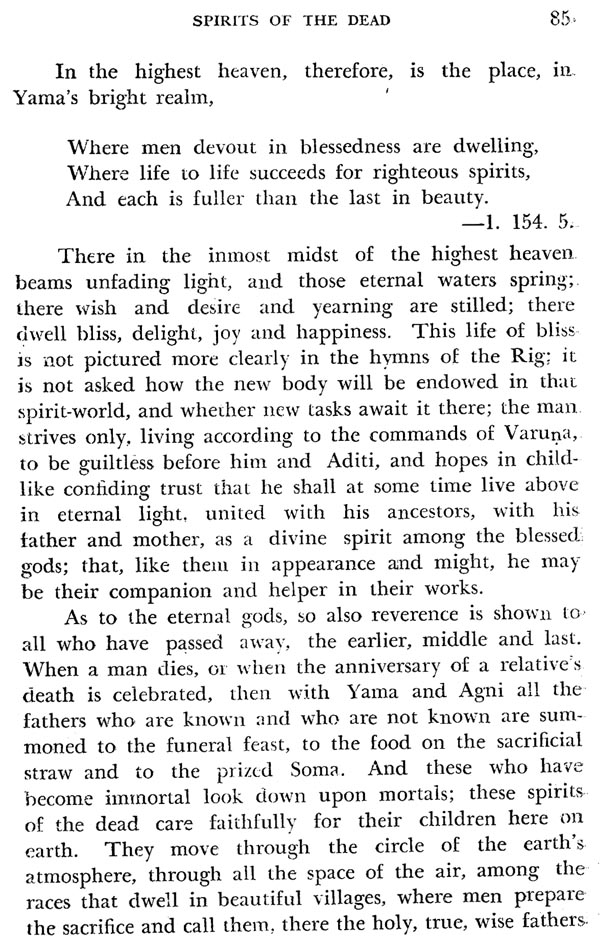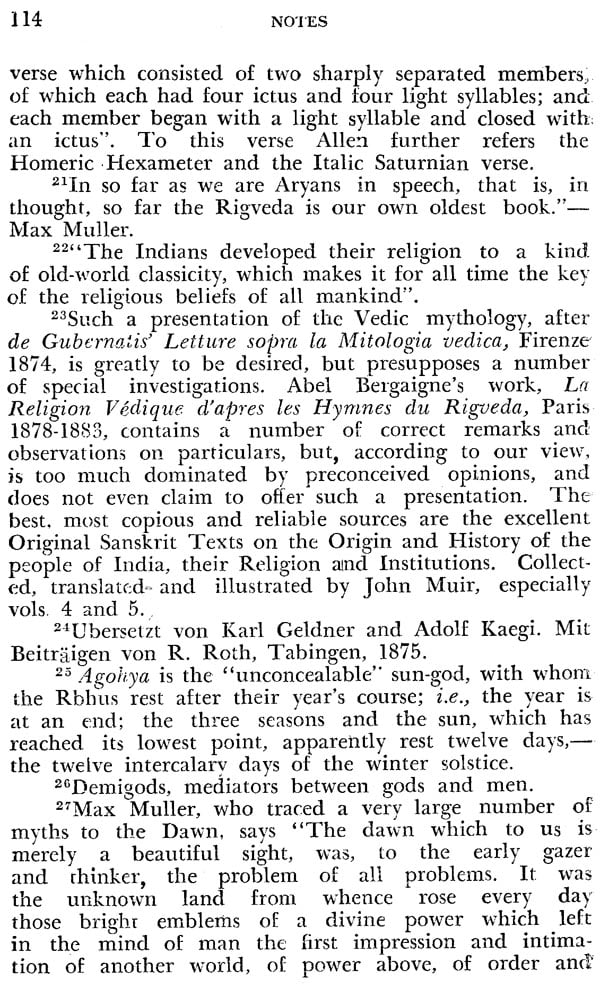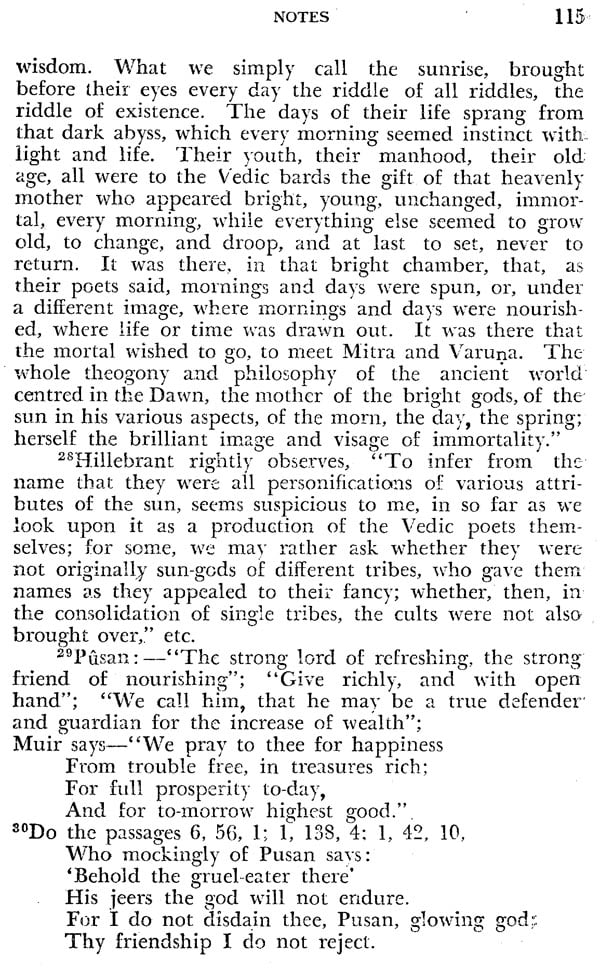
Life In Ancient India- Studies in Rig Vedic India (An Old Rare Book)
Book Specification
| Item Code: | NZW397 |
| Author: | Adolf Kaegi and R. Arrowsmith |
| Publisher: | Susil Gupta (INDIA) Ltd., Calcutta |
| Language: | ENGLISH |
| Edition: | 1950 |
| Pages: | 120 |
| Cover: | HARDCOVER |
| Other Details | 7.50 X 5.00 inch |
| Weight | 150 gm |
Book Description
It is well known with what enthusiasm Voltaire, in his writings, especially in the Essay on the Manners and Spirit of Nations,' repeatedly praised the ancient wisdom of the Brahmanas which he thought to have discovered in the Yajurvedam, brought to his notice from India about the middle of the last century. But even Voltaire's eloquence persuaded but few of his contemporaries of the authenti-city of the book. Although scholars were not in a posi-tion to disprove its genuineness, they preserved a suspi-cious and sceptical attitude toward it. Soon after Vol-taire's death, J. G. Herder, in the tenth book of his Ideas on the History of Mankind,2 unhesitatingly expressed his opinion that whatever knowledge Europeans had hitherto gained of the mysteries of the Indians, was plainly only modern tradition; "for the real Veda of the Indians," he adds, "as well as for the real Sanskrit language, we shall probably have long to wait." Although, happily, Herder's prophecy as to the language itself was not fulfilled, yet in fact a number of decades passed before more trustworthy and detailed information was gained of these oldest lite-rary memorials of the Indians. Colebrooke's celebrated Essays On the Vedas did indeed (in 1805) give a valuable survey of the whole territory of the Vedic literature, with some scattered quotations from various Vedic books; but is was not possible for Colebrooke to examine all the ex-traordinarily extensive works which are embraced in India under the name Veda, to distinguish properly the indivi-dual writings, or to determine their mutual relations.
About twenty years later a German, Friedrich Rosen, recognised in the rich collection of Vedic manuscripts which had come to London, in great part through the efforts of Colebrooke, the true worth of this literature, and the need of making it accessible to European scholarship. He undertook with zeal the editing of the oldest portion,. the Rigveda, but died in 1837, before the first eighth was published.
The first enduring impulse was given by the small but epoch-making On the Literature and History of the Vedas,3 von Rudolph Roth, Stuttgart, 1846. It inaugurated a movement which since then has irresistibly led all Sans-kritists to the study of the Veda. As early as 1852, aided by the recent purchase of a rich collection of Sanskrit manus-cripts by the Royal Library of Berlin, A. Weber was en-abled to give, in his Studies in Indian Literary History4 a very detailed and valuable survey of the Vedic books, which was afterwards supplemented in many points, espe-cially for the later periods, by Max Muller's History of Ancient Sanskrit .Literature, London, 1859. During the last twenty years, through the efforts of Benfey, Weber, Roth and Whitney, and Aufrecht, the most important texts, since followed by many more, have been accessible in printed foNm; and this investigation opens to the his-torical sciences, in the broadest sense of the word, sources of unexpected wealth.
**Contents and Sample Pages**
